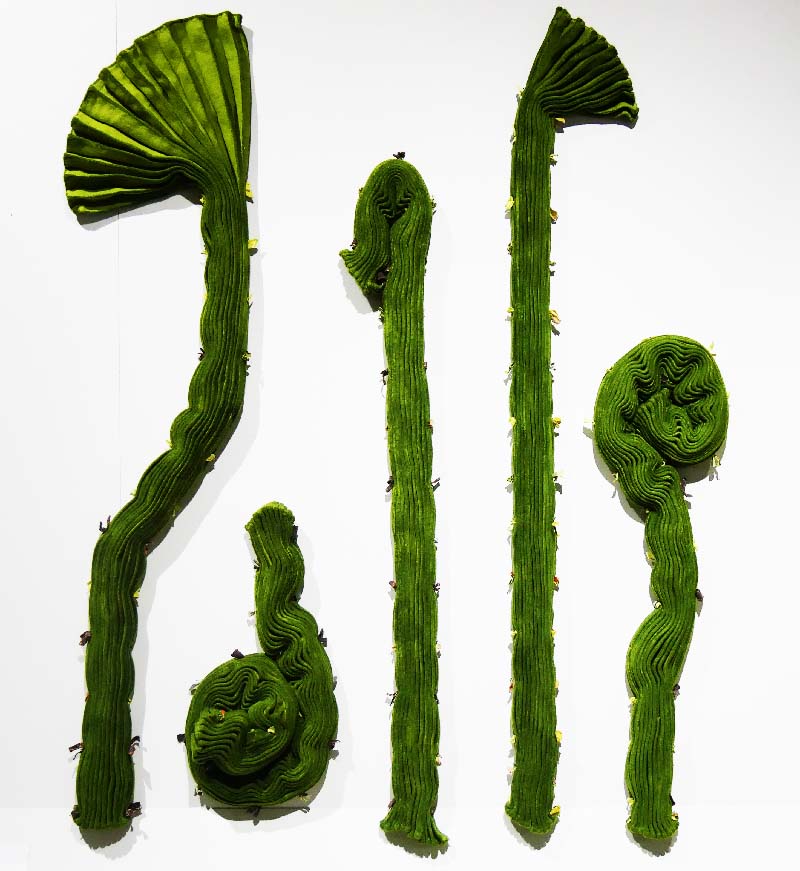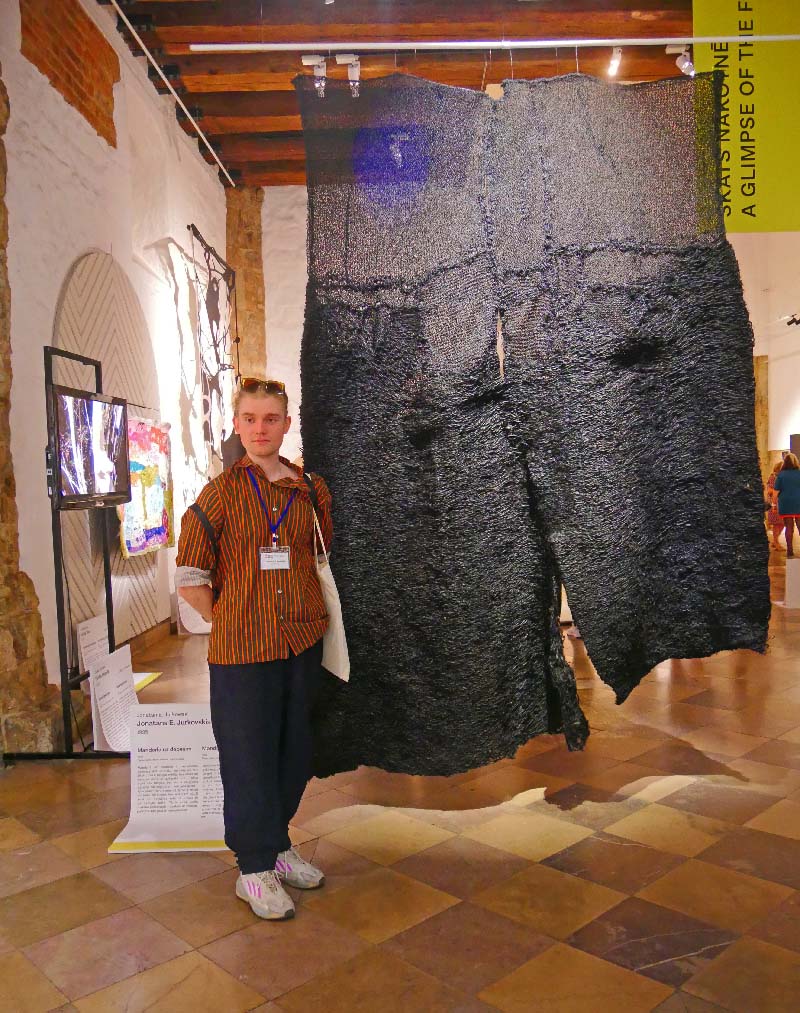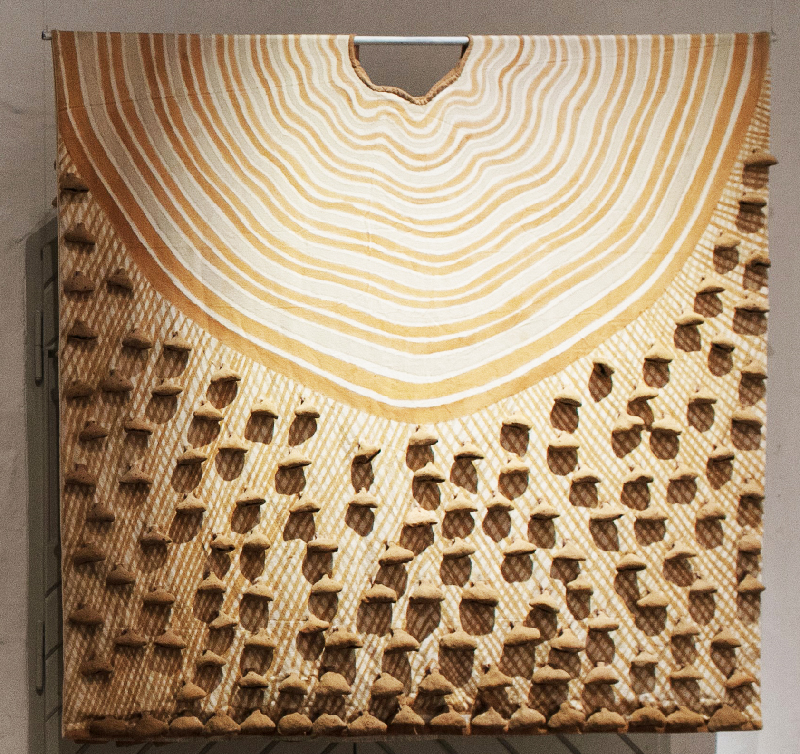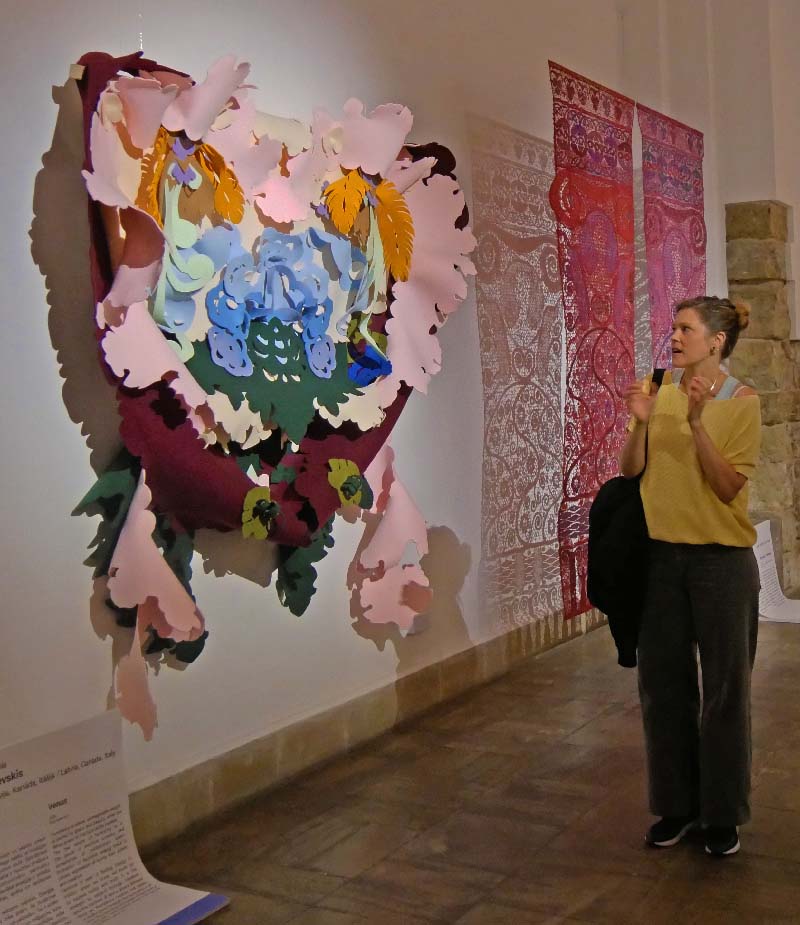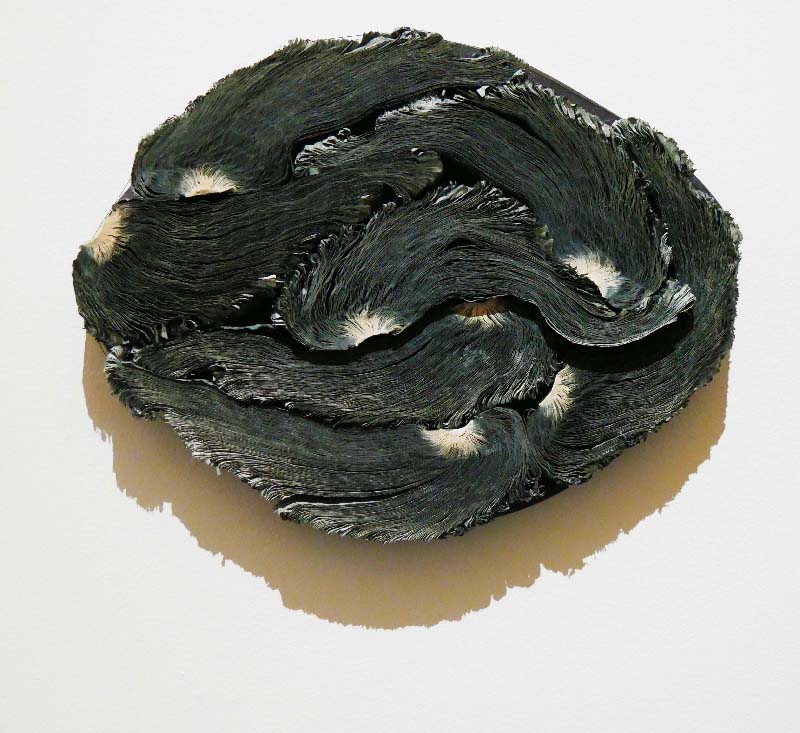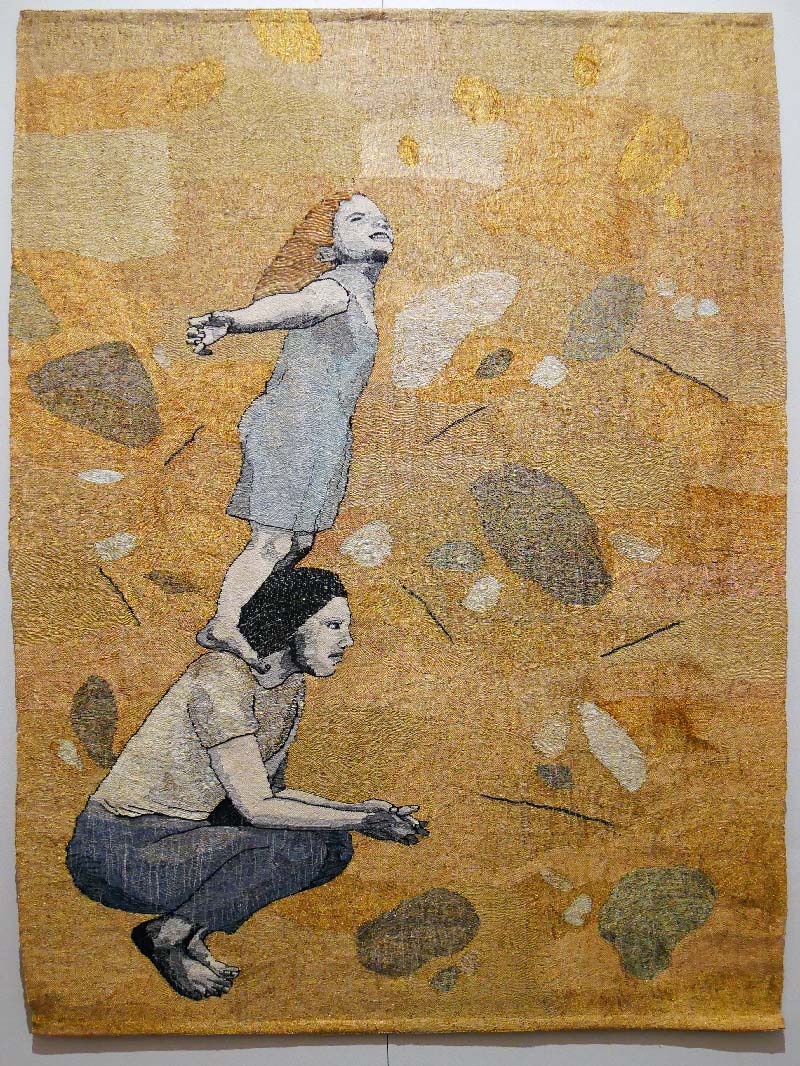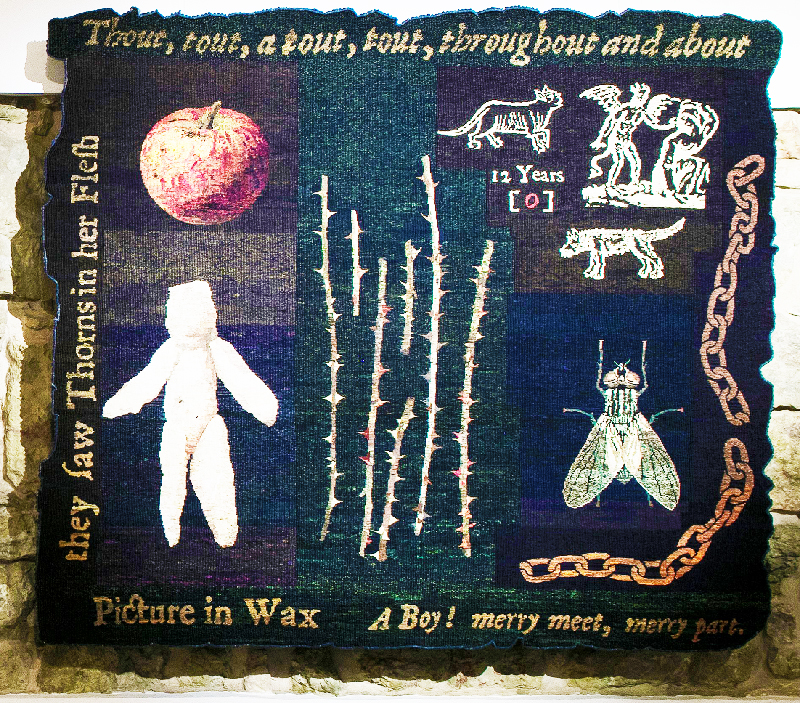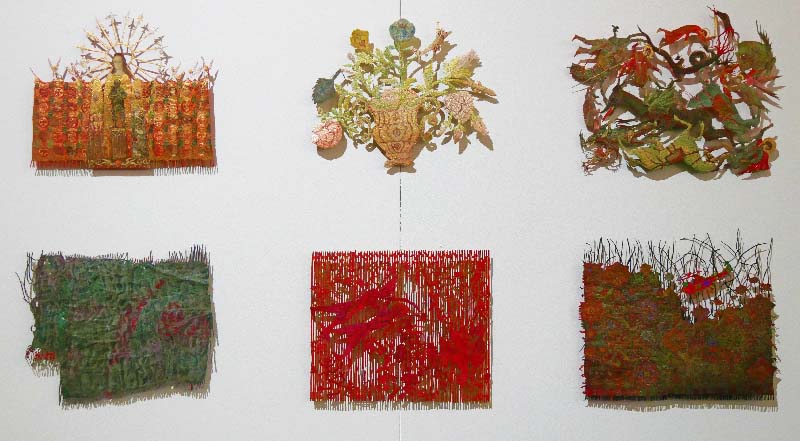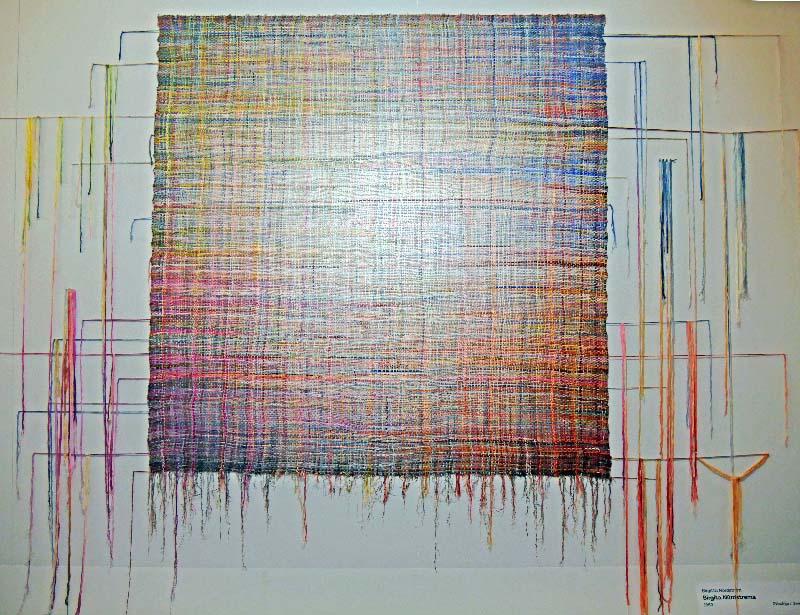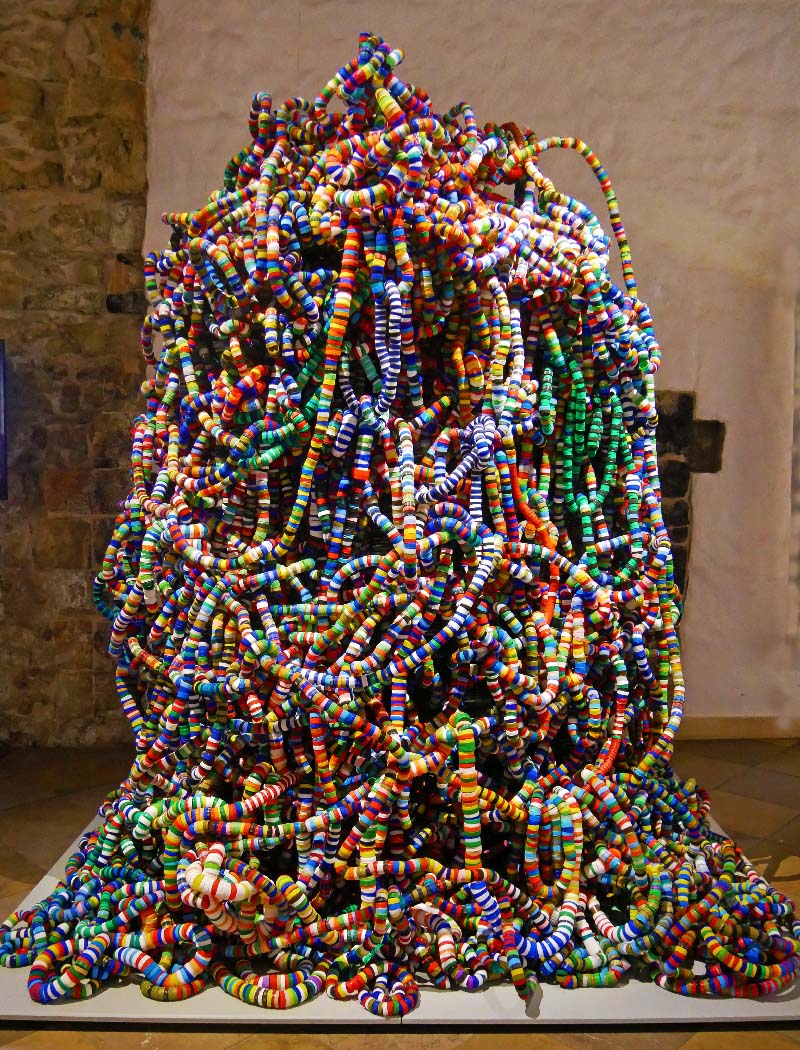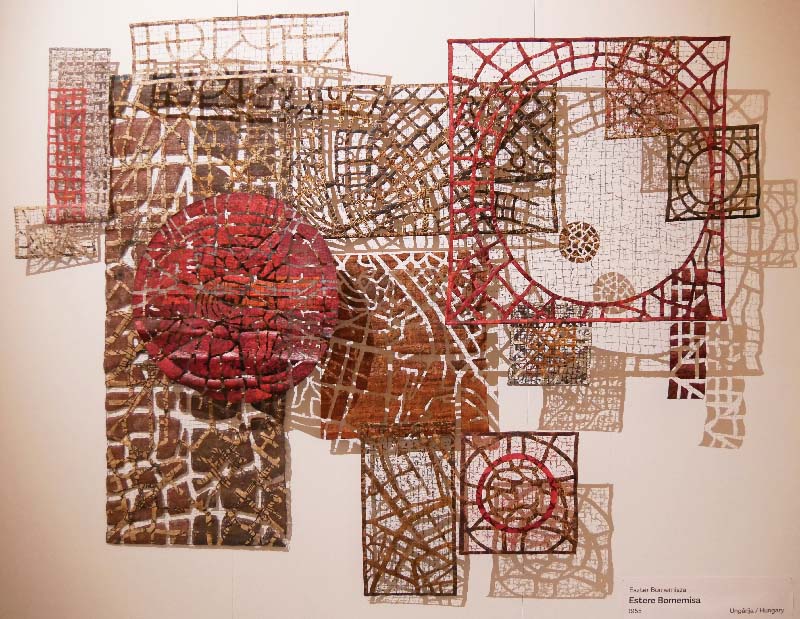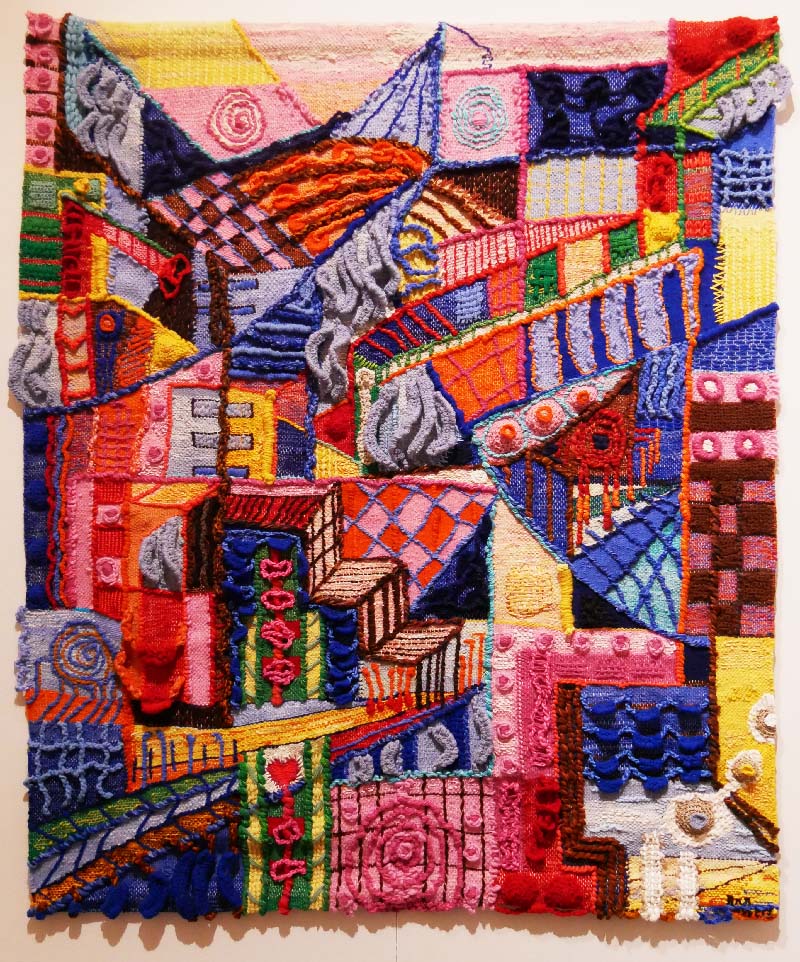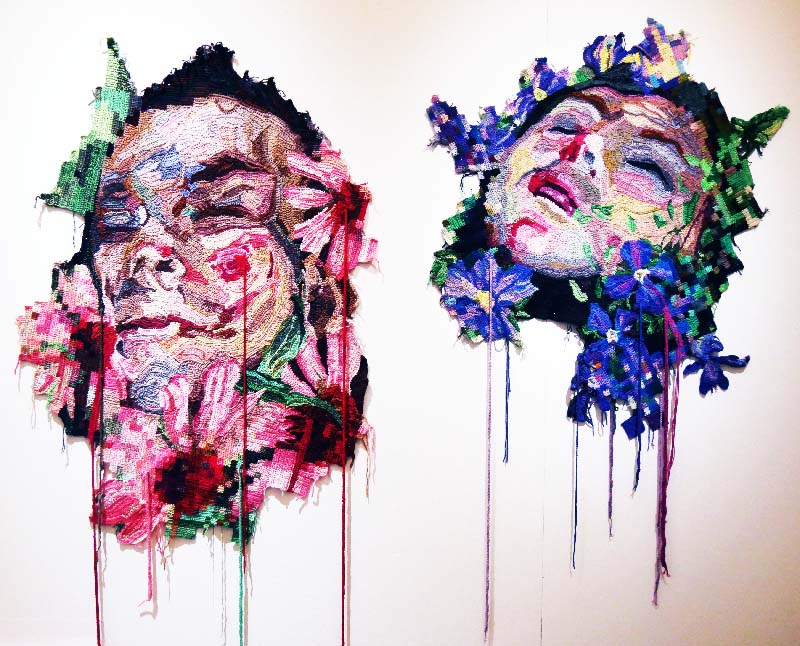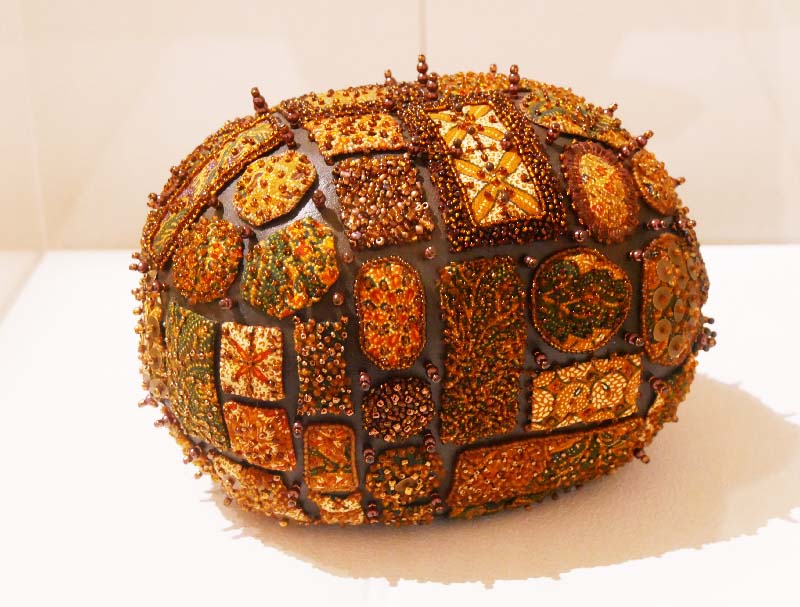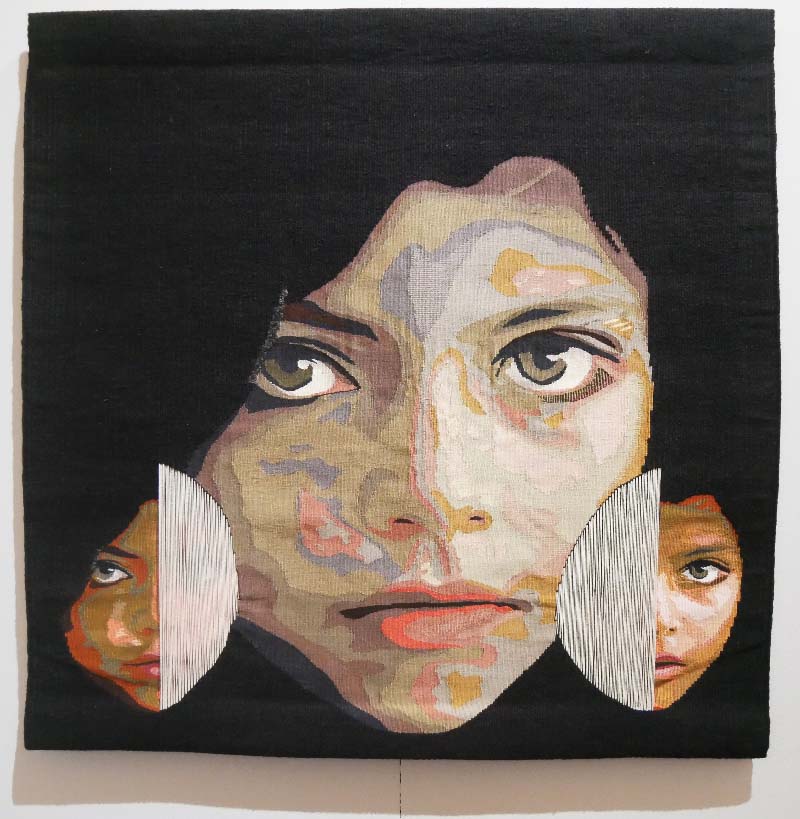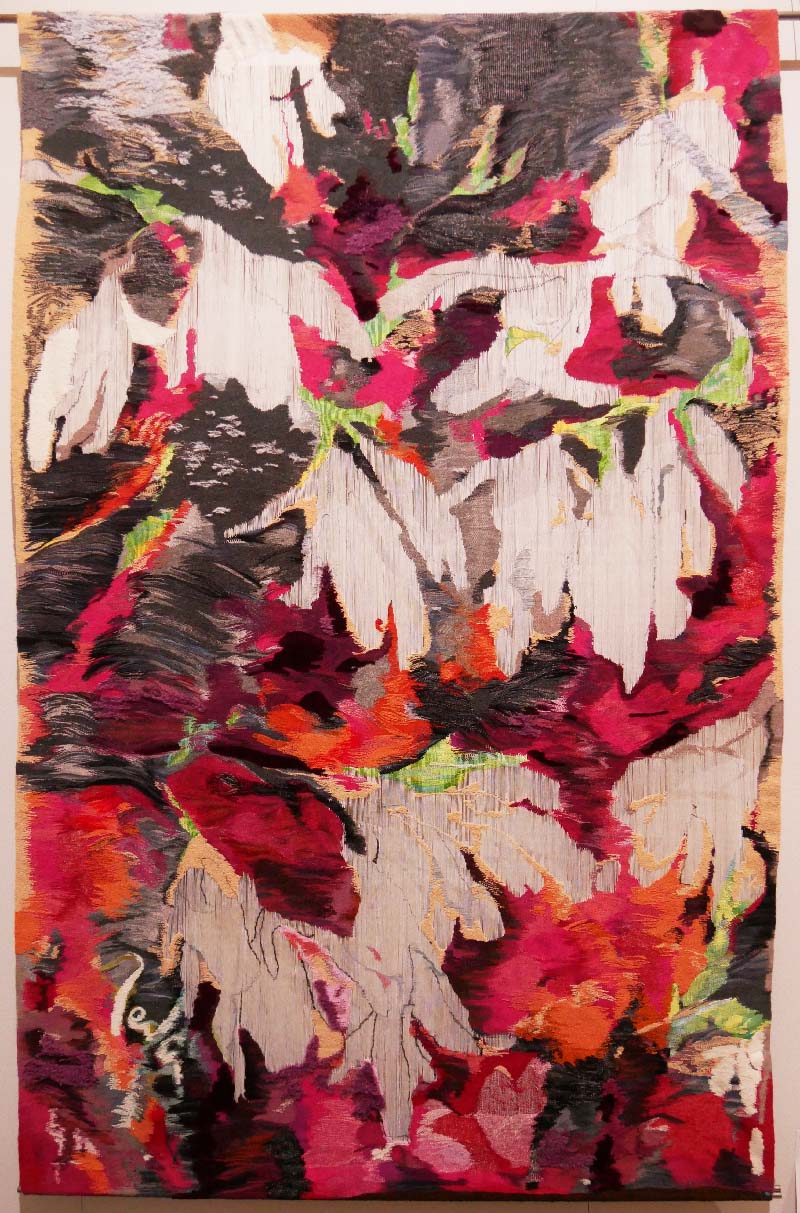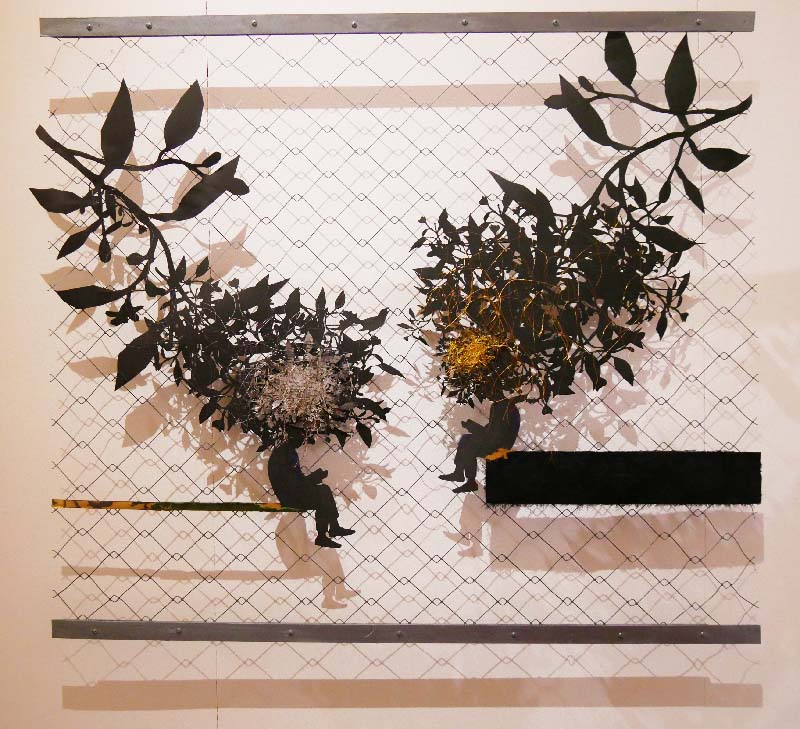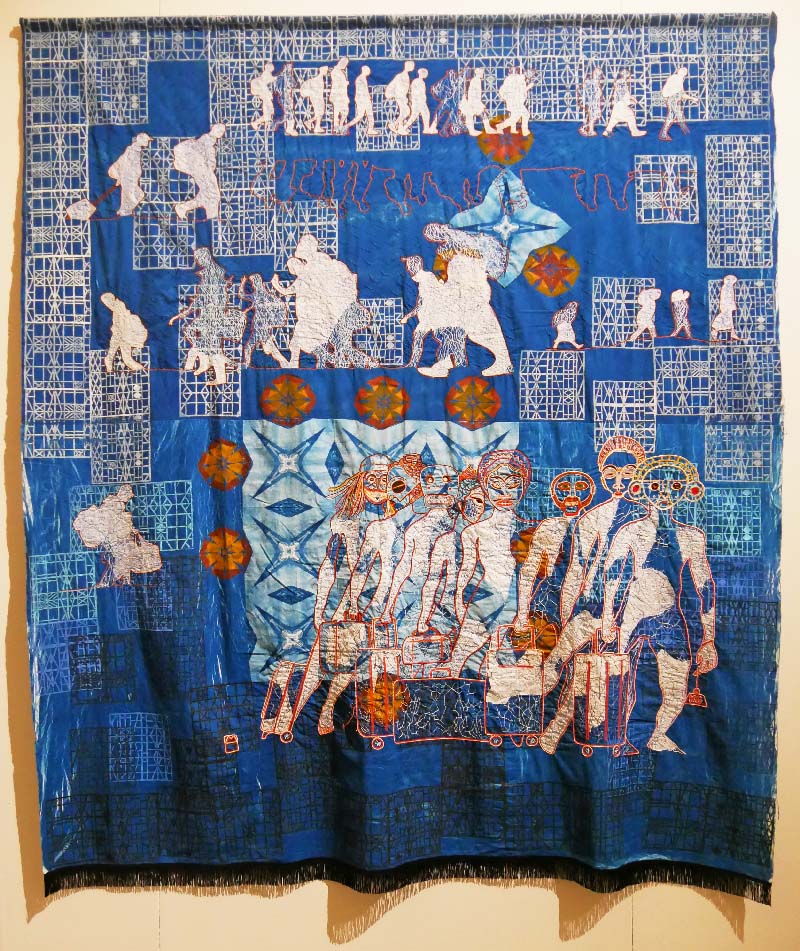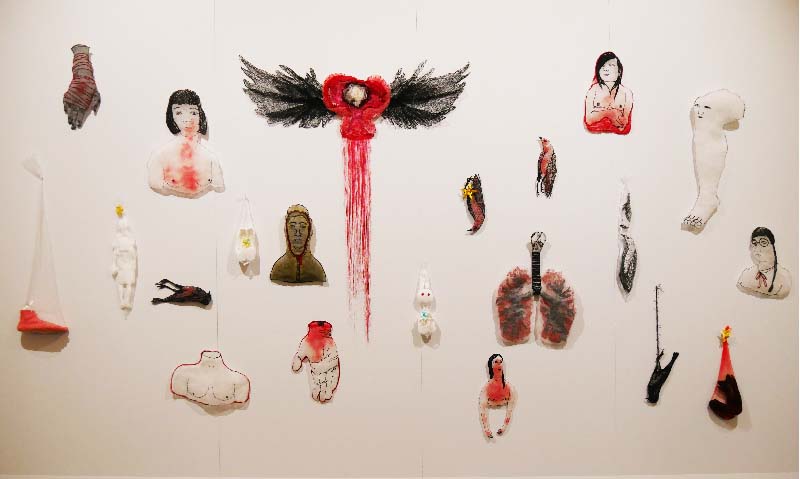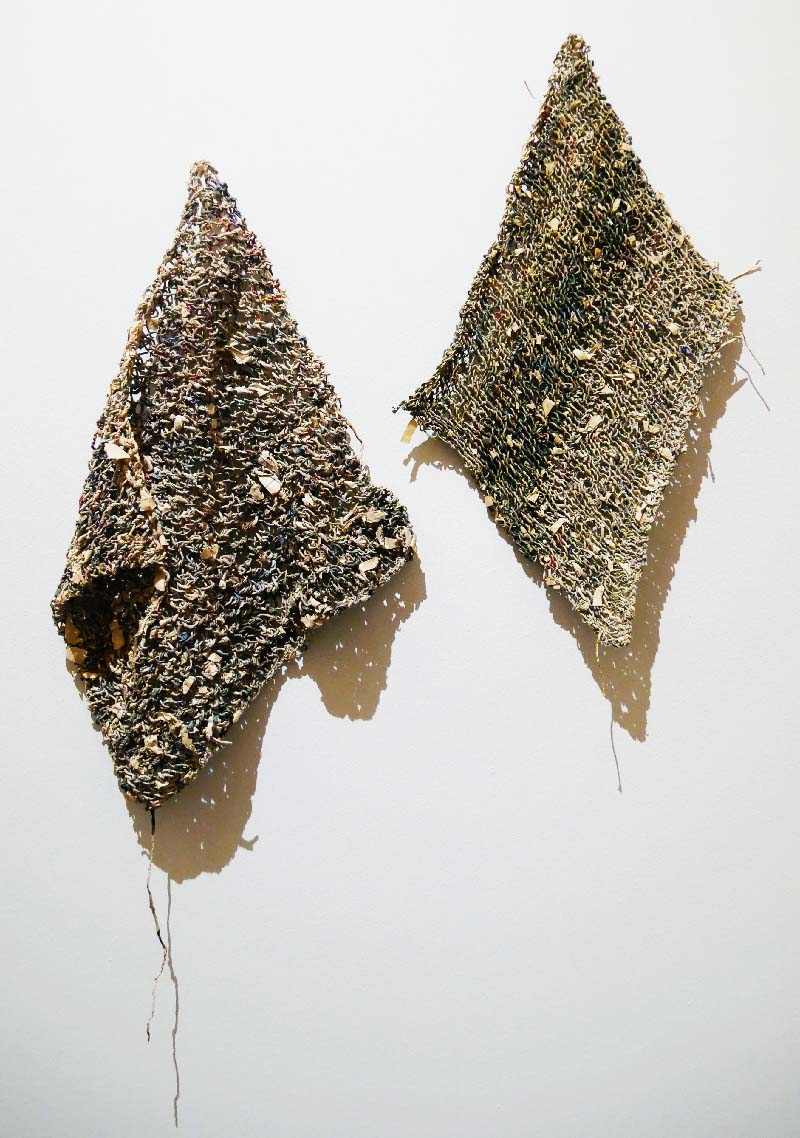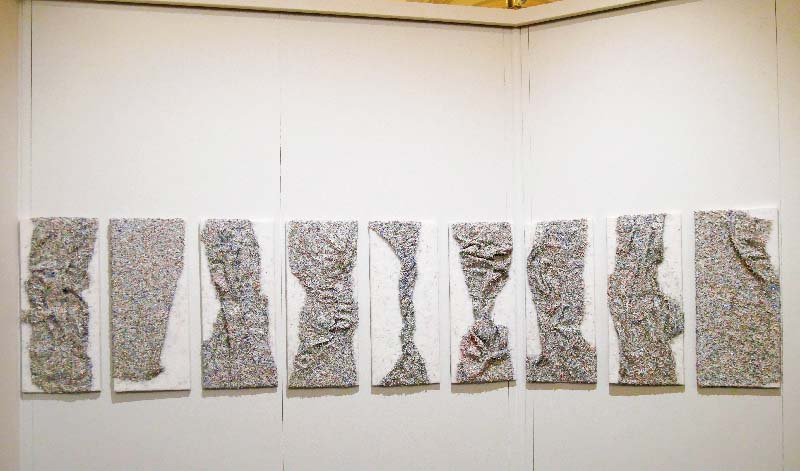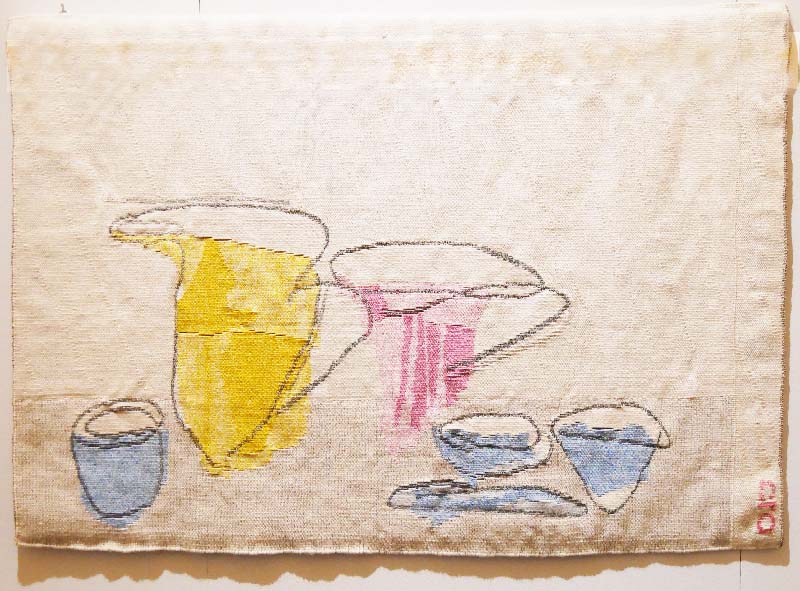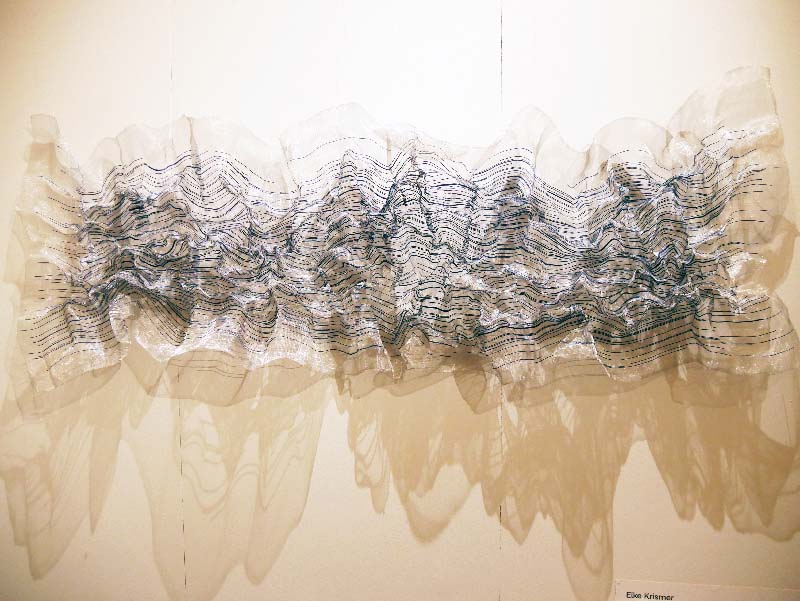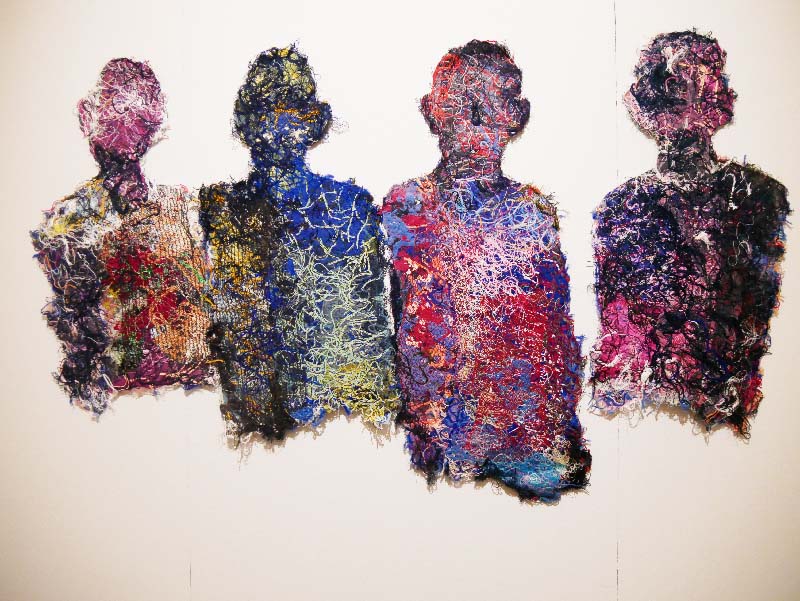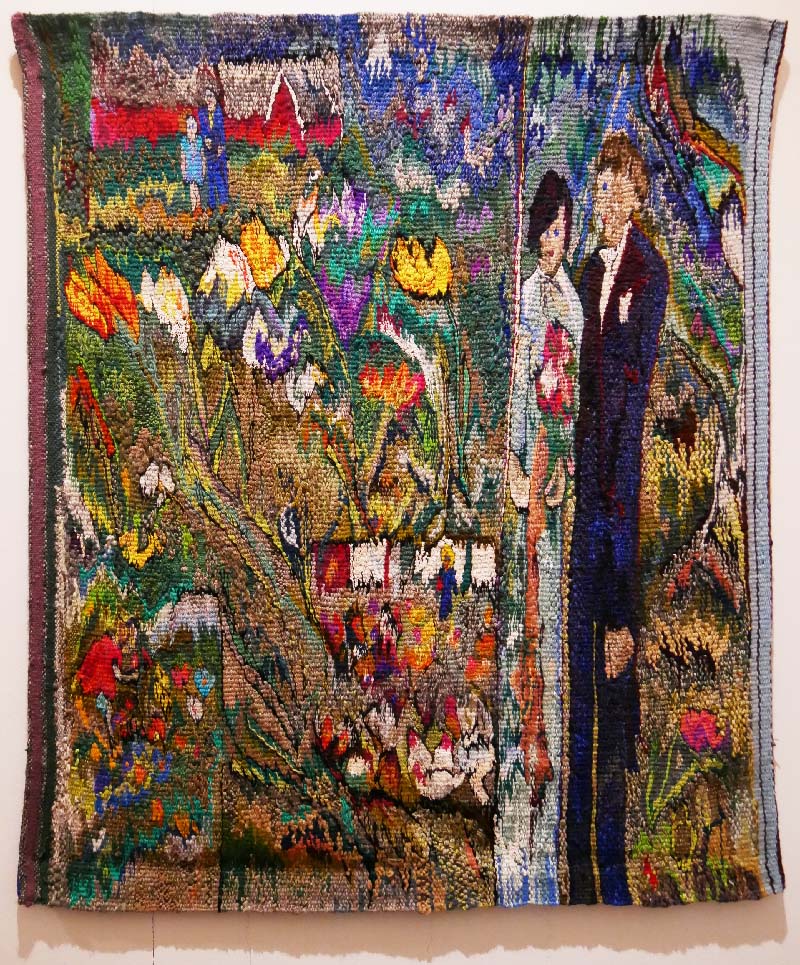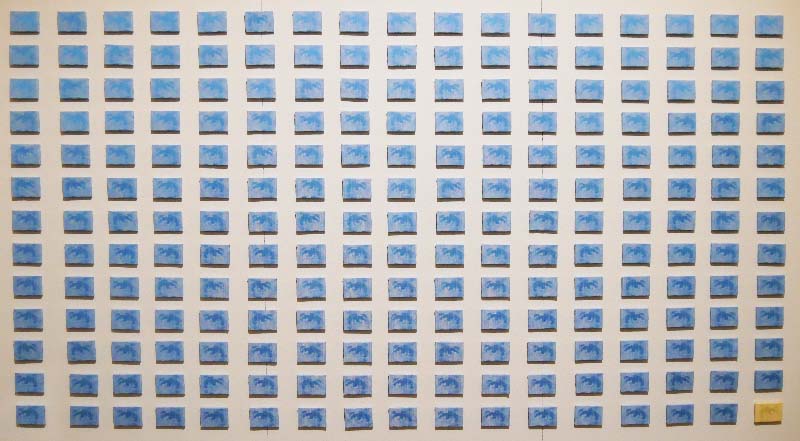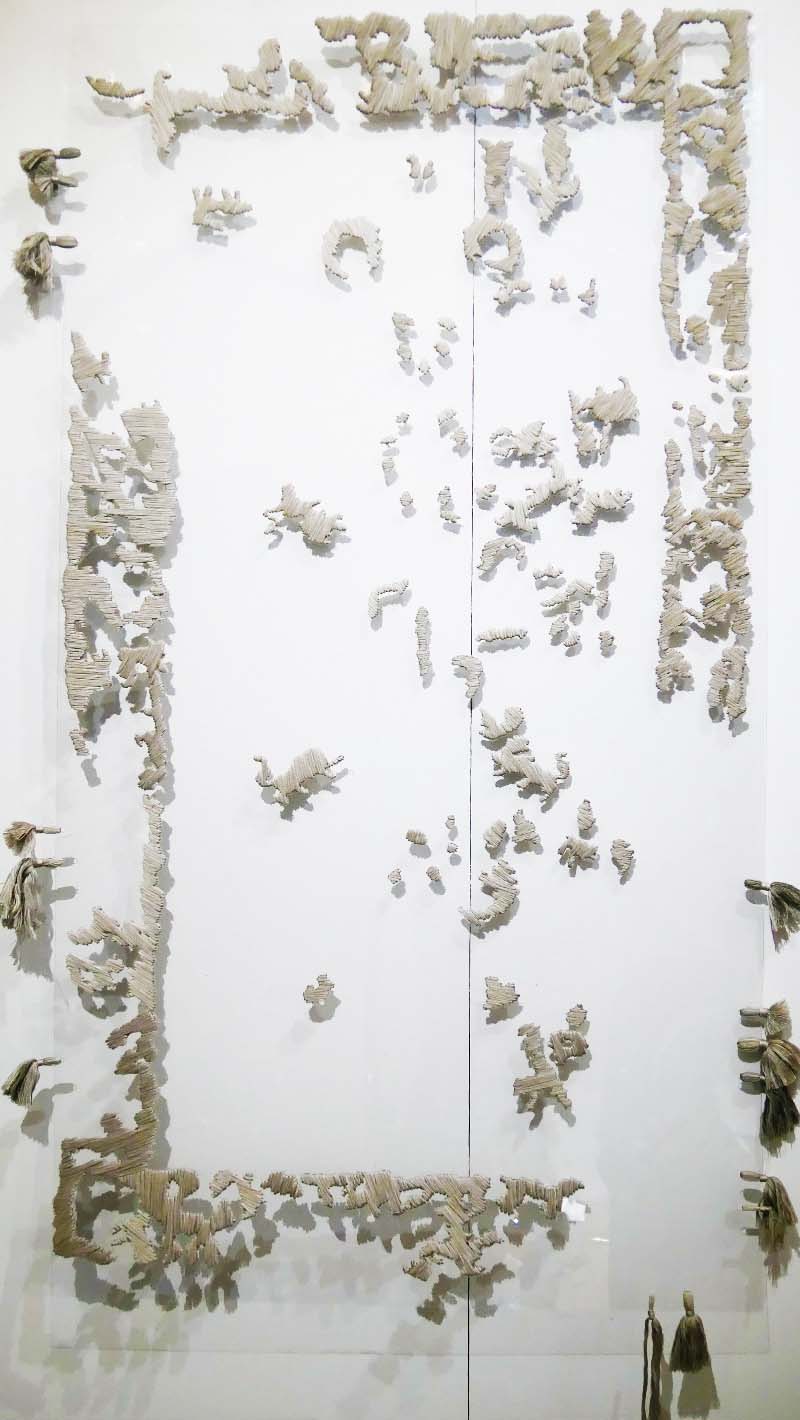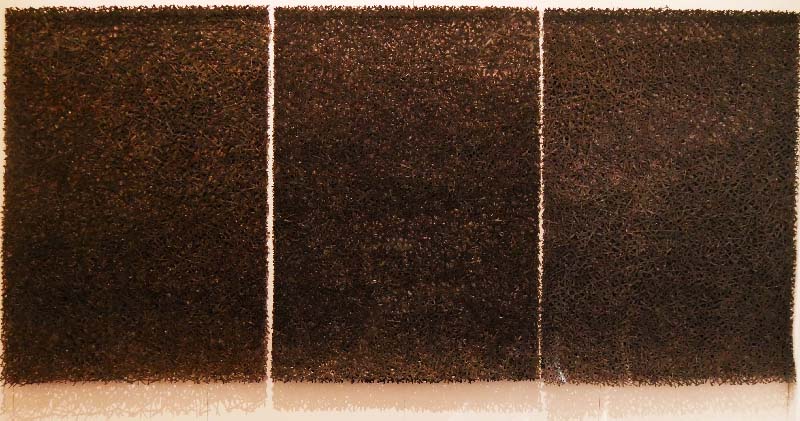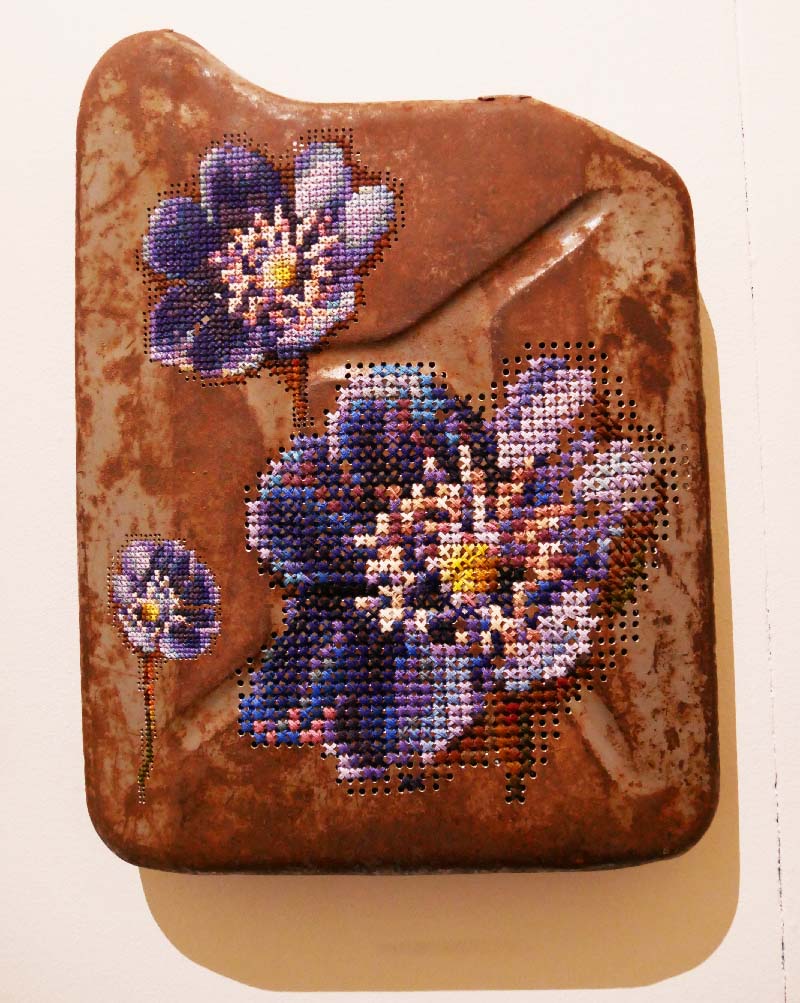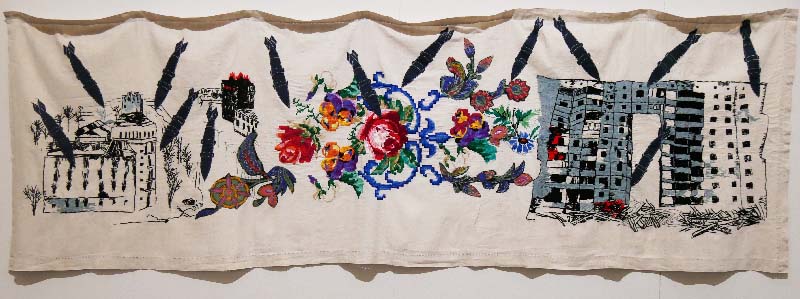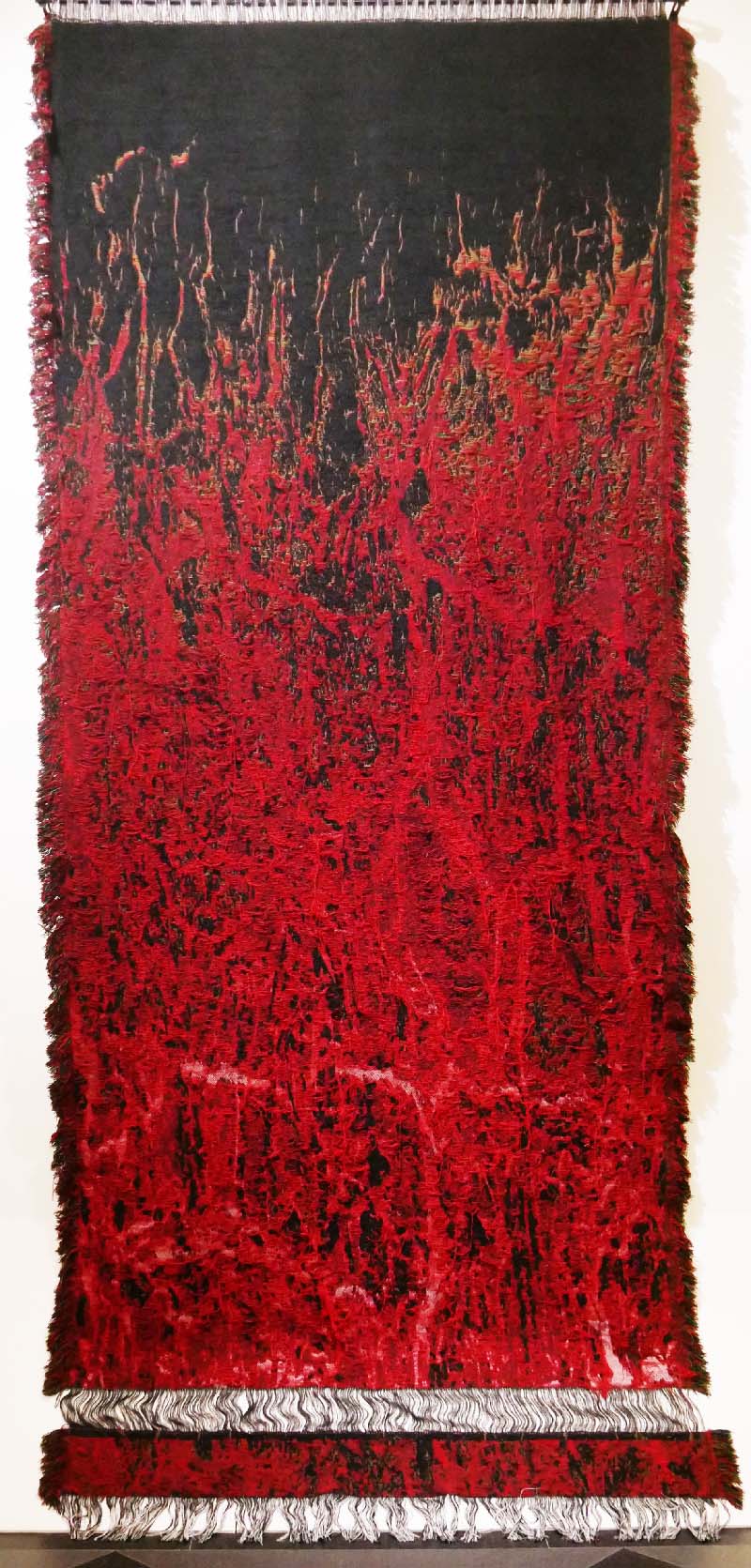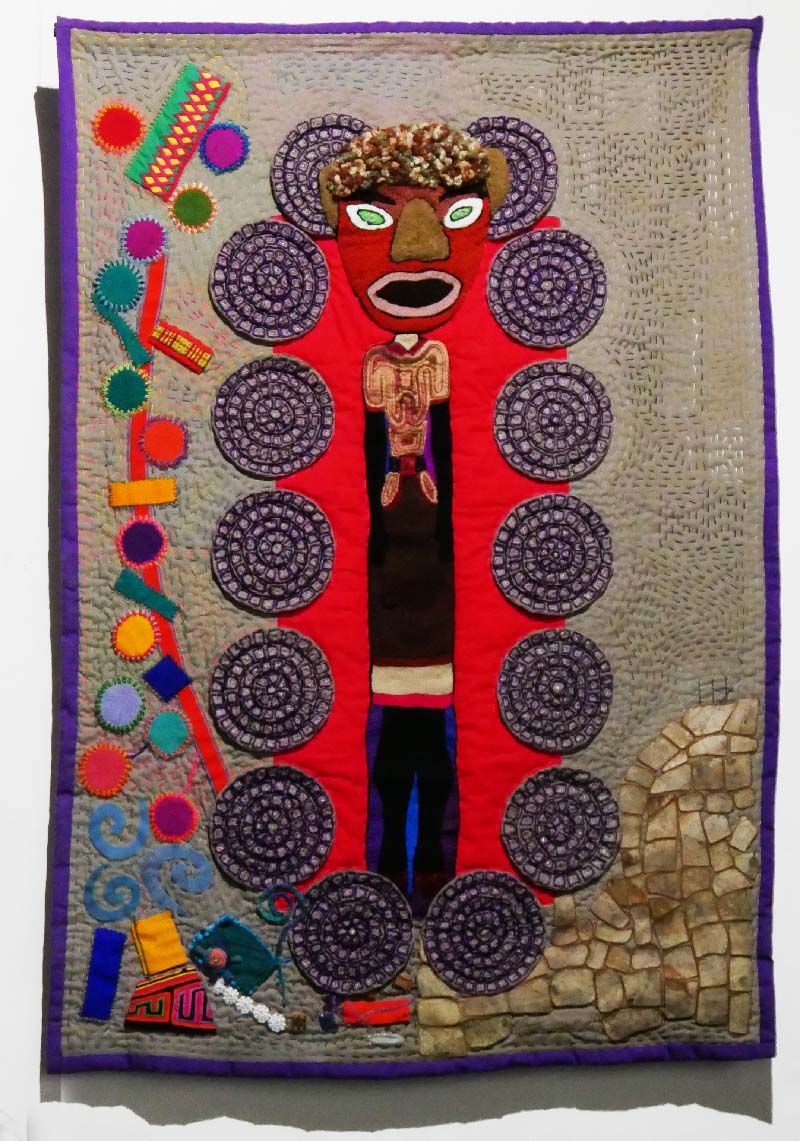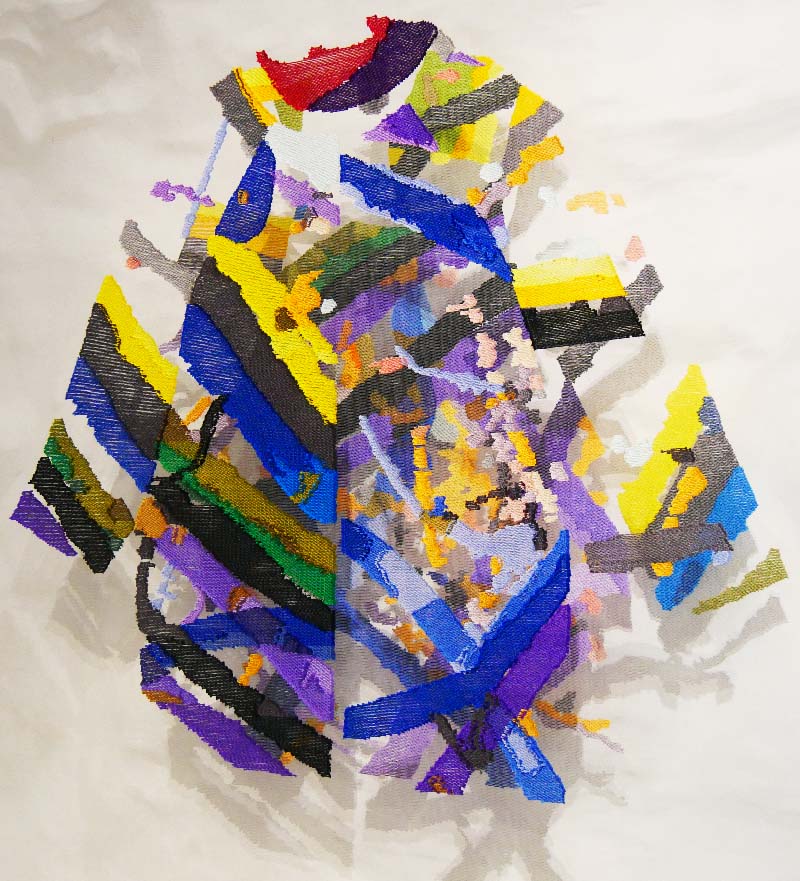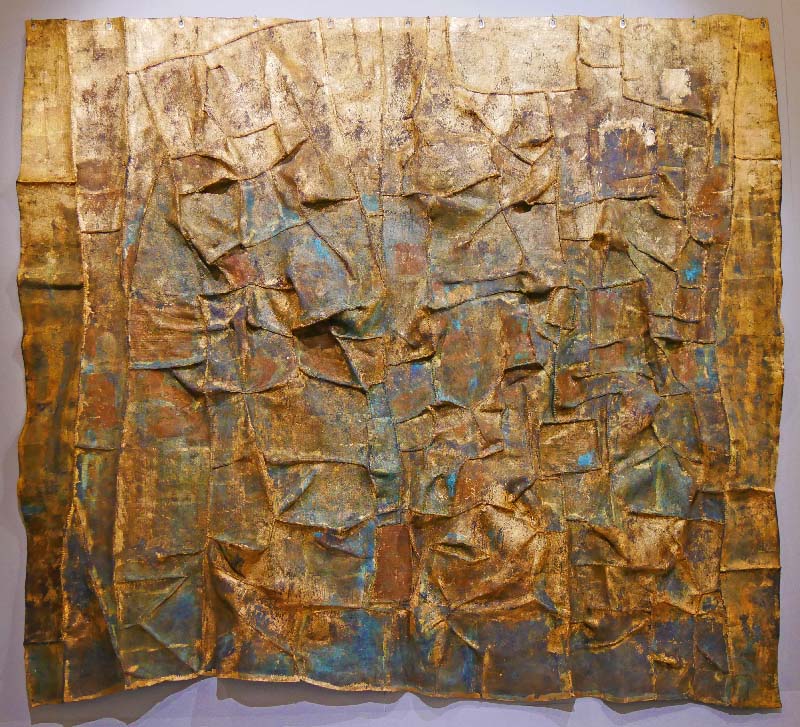
The 7th Riga International Textile and Fibre Art Triennial, Part 1
I am just back from the opening of the Riga Triennial, which was a week full of wonderful textile art, Lectures, openings and excursions, together with old and new friends. One of the surprises was the difference between having seen all the works during the jury process as photos and the real stuff that was so much more powerful! It might have been due to the theme of this years Triennial “Quo Vadis”, where are we going to, that the works were so strong. There were more serious works, showing deeper thoughts than usual in an exhibition of this type. Two of the Prize-winning works were directly related to the circumstances of war: The first Prize won by Loreta Svaikauskiene for “The Iron Curtain” – is about the boundary separating the awful and insane aggressor from a civilized world. The second Prize given to Kerstin Lindström “May the Force be with us”- is a symbol of the power nature possesses. A prayer that growth will support man to preserve a living environment. The piece as was made out of 5 army blankets into a flamboyant green object. The third Prize went to Jonatan Jurkowski for his work “Mandorla for Heaven” a metaphor of a gateway to a place where we are all going, a moment of passage and transition – death is no longer an end, but a starting point of a new journey – that journey is a big question mark, Quo Vadis!
Four further Recognitions were given by the Latvian National Museum of Art, for Yosi Anaya, Mexico with her piece” Shamanic Mantle”, handprinted with plant extracts from Central Veracruz and terracotta bells; for Ilze Godlevskis, Latvia,/Kanada/Italy for her work “Venus” done in felt and lasercut; for Chen Chun Tai , Taiwan, for her piece “Lost” created out of old telephone books; and finally for the artist group “Handwork” from Lithuania making a collective embroidery work “Stitching the Poem” in collaboration with the Ukrainian poet Halyna Kruk and the Vilnius city community.
More to follow about the diverse exhibitions in Riga and further works in the exhibition of the Triennale itself. for a start here follows my contribution for the Catalogue:
This was one of the most pleasant jury meetings I have ever had. There were 6 members: three working for the exhibiting museums in Riga (Velta Raudzepa & Inese Baranovska from the Museum of Decorative Art and Design, and Vita Birzaka from the Art Museum Riga Bourse); two involved in education (Tim Parry-Williams, University of Bergen, Norway and Wlodzimierz Cygan, Strzeminski Academy of Art in Lodz, Poland) who both instruct young people in the textile arts; and myself, a representative of the publishing sector and a writer of a blog on textile art. There was no hidden agenda, such as an obligation to include the “Global South”, nor any hint of a fine art bias. One of the judges asked what should come first, the aesthetics of a work or adherence to the theme; the answer was that the aesthetic impression of a work should be the most important aspect to look for. Working with the group was so pleasant because everyone listened to the other members, there was no ‘bellwether’ taking the lead and nobody complained when we had to take yet another close look at one of the photos. The availability of good photos is so essential in a process where there are only a few minutes to look at each image. I heard sentences like, ”People sending such bad pictures should not be surprised if they do not get accepted”, and “but the work looks better in real life than it does in the pictures”.
The entire judging process was of course anonymous, but I recognised at least 30 per cent of the artists by their work. There were entries by some well-known artists that I appreciated very much as they often prefer to attend by invitation only.
The 77 works selected display a rich variety of techniques. Weavings constitute the largest group (22), with 14 tapestries, 3 jacquard pieces and 5 other types of weavings. Next are sculptures and installations (10), with 6 textile sculptures, 2 thread sculptures and 2 installations. The trend towards stitching/embroidery continues, with 14 works represented, followed by handmade paper (5) and knitting (5). This was a surprise to me as knitting has had very low recognition as a medium for making art. What Li Edelkoort has been predicting for some time now may be true: crafts are making a glorious come-back. Furthermore, 4 participants entered collages and 4 submitted video presentations, followed by tufting (2) and one work each using shibori, hand painting, felt, dyeing, computer embroidery, screen-printing, needle felt, laser cutting, crochet, thermal silicone and mycelium.
Regarding the content, there were many pieces that dealt with anxieties, pain, grief and despair, the loss of relatives and friends through the pandemic and the war in the Ukraine, as well as work on global warming, climate change and endangered species. Other artists addressed the dehumanisation and deterioration of society as well as the dangers of social media due to lack of protection and the illusion bubble they help to create. Only one artist addressed political issues like the George Floyd murder, social injustice and the presidential elections in the USA.
On the subject of the healing process, many artists referred to nature; one work entitled “Philosopher’s Stone” referred to “wise people who could change the current situation for the better”. Generally speaking, the topics were more serious than ever before, and there were almost no funny works simply expressing “joie de vivre”, the pleasure of being alive in spite of it all. These are difficult times, and artists are particularly sensitive in their observations and transformation of their experiences into works of art. The very language of art is becoming more serious these days, and it seems clear to me that we need this language more than ever before. Artists have the gift to express their feelings in works that reach other spheres than speech or logic. That in itself is a healing process which is as important as nature.
I am proud to have been part of this jury and thus co-responsible for an exhibition which, as I see it, will be really interesting, sensitive to our time and relevant in terms of artistic expression. I hope that many people will come to Riga to see this exhibition in real life.
